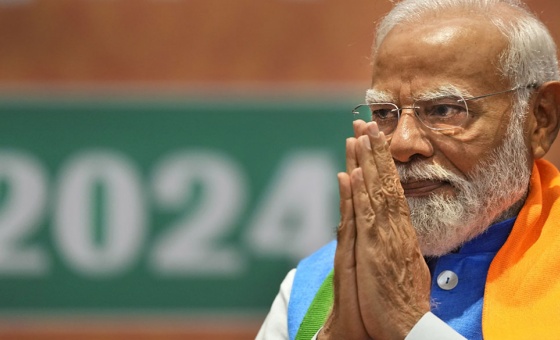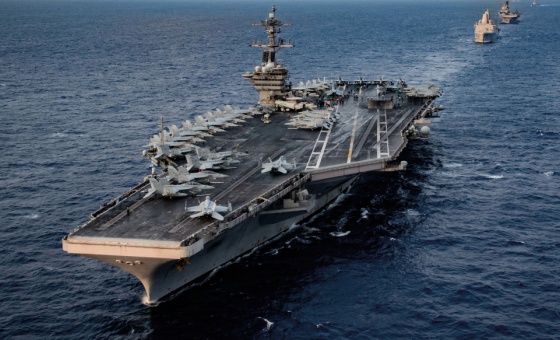This is the last article you can read this month
You can read more article this month
You can read more articles this month
Sorry your limit is up for this month
Reset on:
Please help support the Morning Star by subscribing here
Wapping: The Workers’ Story
directed by Chris Reeves
(Platform Films)
Wapping - the workers' story from Christopher Reeves on Vimeo.
THIS award-winning documentary on the 1986 Wapping printworkers' strike is the most recent in a series of first-rate films made by Platform Films for the trade-union and wider labour and progressive movements.
It begins with dramatic footage on the evening picket line outside the Docklands site as mounted police charge towards the camera and the ranks of supporters. Those who emerge with blood-spattered faces after being hit by police batons are helped to safety.
The dispute, fought by London’s Fleet Street print workers, arose only one year after the miners’ strike had been defeated. It was the last significant battle in recent history by Britain’s trade unions in an attempt to stem the Thatcher government’s determination to smash the organised working class in this country.
Along with the miners’ strike, the Wapping dispute became yet another significant defeat in the history of the British trade-union movement.
The target of the workers’ anger was Britain's largest privately owned newspaper empire, News International — parent of The Times, the News of the World and others and owned by Rupert Murdoch. He wanted to introduce technological innovations that would put 90 per cent of typesetters, at the mercy of new technologies, out of work.
The company offered redundancy payments of £2,000 to £30,000 to each printer to quit their old jobs but the union rejected the offer and called its members out. Meanwhile, News International had built and clandestinely equipped a new printing plant in the London district of Wapping.
Immediately after the dispute was officially announced on January 24 1986, dismissal notices were served on all those taking part in the industrial action, effectively sacking 6,000 employees. As part of a plan that had been developed over many months, the company replaced the workforce with members of the Electricians’ Union (EETPU) and transferred its four main titles to the Wapping plant.
During the dispute, thousands of union pickets tried to block shipments out of the plant. There were 1,500 arrests. The Sogat union tried to carry out secondary picketing to prevent the distribution of Murdoch’s papers but was fined in court and its assets sequestered.
More than 400 police officers, some TNT drivers and many members of the public were injured and more than 1,200 arrests made during the dispute. A large-scale police operation was mounted throughout London to ensure the Wapping plant could operate and local residents were placed under a virtual state of siege.
By 1988, nearly all the national newspapers had abandoned Fleet Street to relocate in Docklands and had begun to change their printing practices to those being employed by News International.
When Murdoch decided to introduce new electronic technology to print his papers and bypass the unions, he took on a group of the best-organised workers in the country. However, he could never have won without full backing from the Tory government, the whole power of the state in a military-style operation and working hand in glove with a blackleg EETPU, led by the viciously anti-socialist and unscrupulous general secretary, Eric Hammond.
Of course, it would have been only a matter of time before the old hot-metal printing process was replaced by new technology, just as coal mining has had to be phased out to save the planet. But that was not the real issue at Wapping, despite the right-wing media’s depiction of the dissenting unions as dinosaurs defending archaic industries. The workers and their unions had no option but to stand and fight.
This new documentary by director Chris Reeves and executive producer Maxim Ford is the first to pay due tribute to that iconic year-long struggle. They have put together dramatic footage taken at the time interspliced by remarkable interviews with a wide range of those who took part in the struggle. The input of Ann Field in terms of research, advice and fundraising from the trade-union movement is inestimable.
Expertly shot and superbly edited, the film is a moving testimony to the men and women who provide a day-by-day, blow-by-blow narration of the battle as it unfolded. The accompanying music by Alan Gibson adds an emotional and dramatic accent without becoming intrusive.
The film makes it abundantly clear that this dispute was not simply about introducing new technology but about destroying the power of the Fleet Street unions. Its collateral damage was the destruction of lives, communities torn apart and a bitter legacy of raw capitalist power and brutality. It is the story of a ruthless employer pitted against a workforce sustained by pride, solidarity, dignity and determination.
The final credits of the film remind us of the lessons to be learnt from this battle and that, despite 13 years of Labour government, the anti-union laws are still in force and privatisation and the centralisation of power has continued apace.
For anyone interested in labour-movement history, this is a film not to be missed.
Available online at vimeo.com/ondemand/wappingtheworkersstory. A DVD version with extras (£8 + £1 p&p), is available from platform films, email: [email protected].











